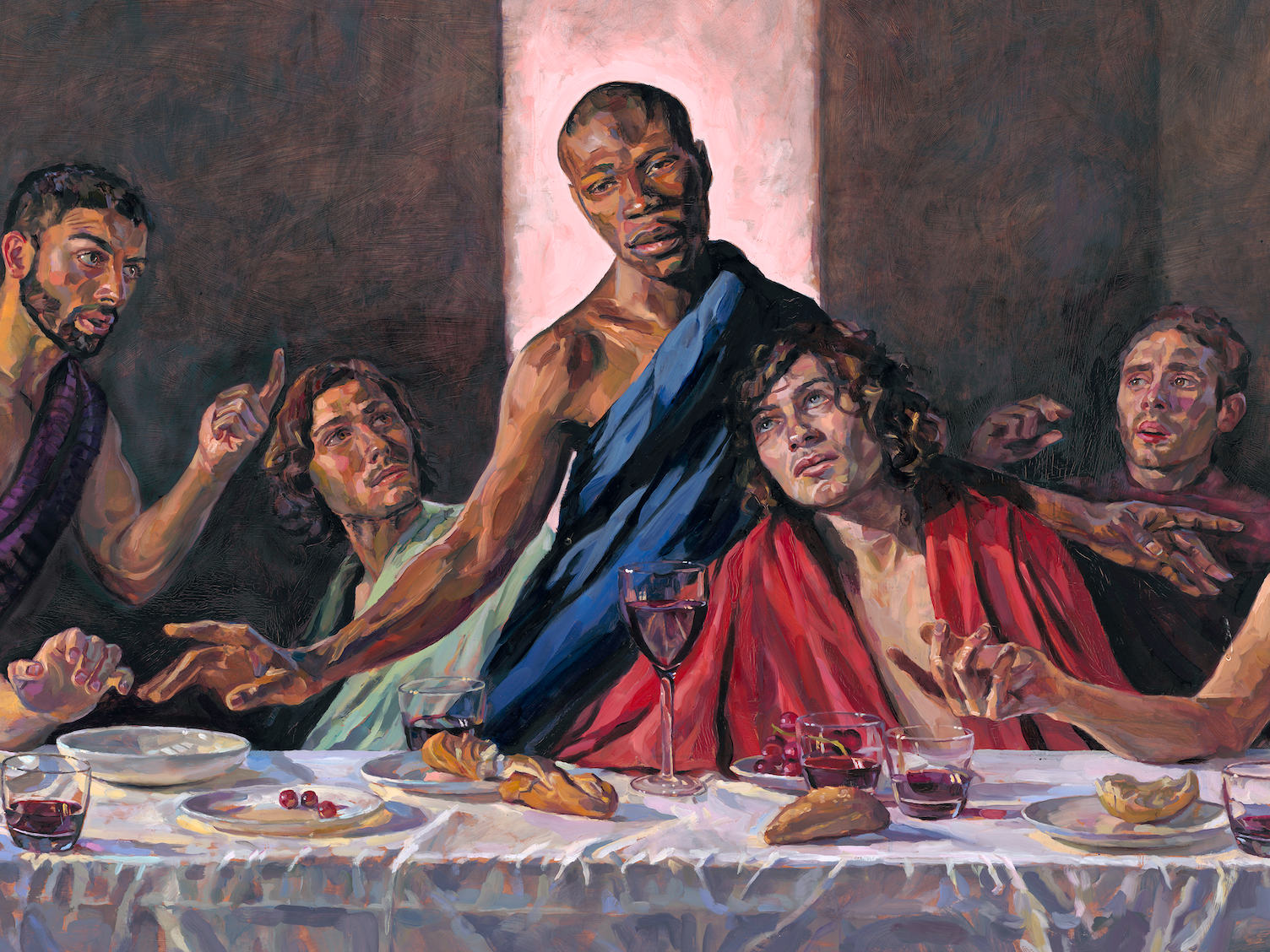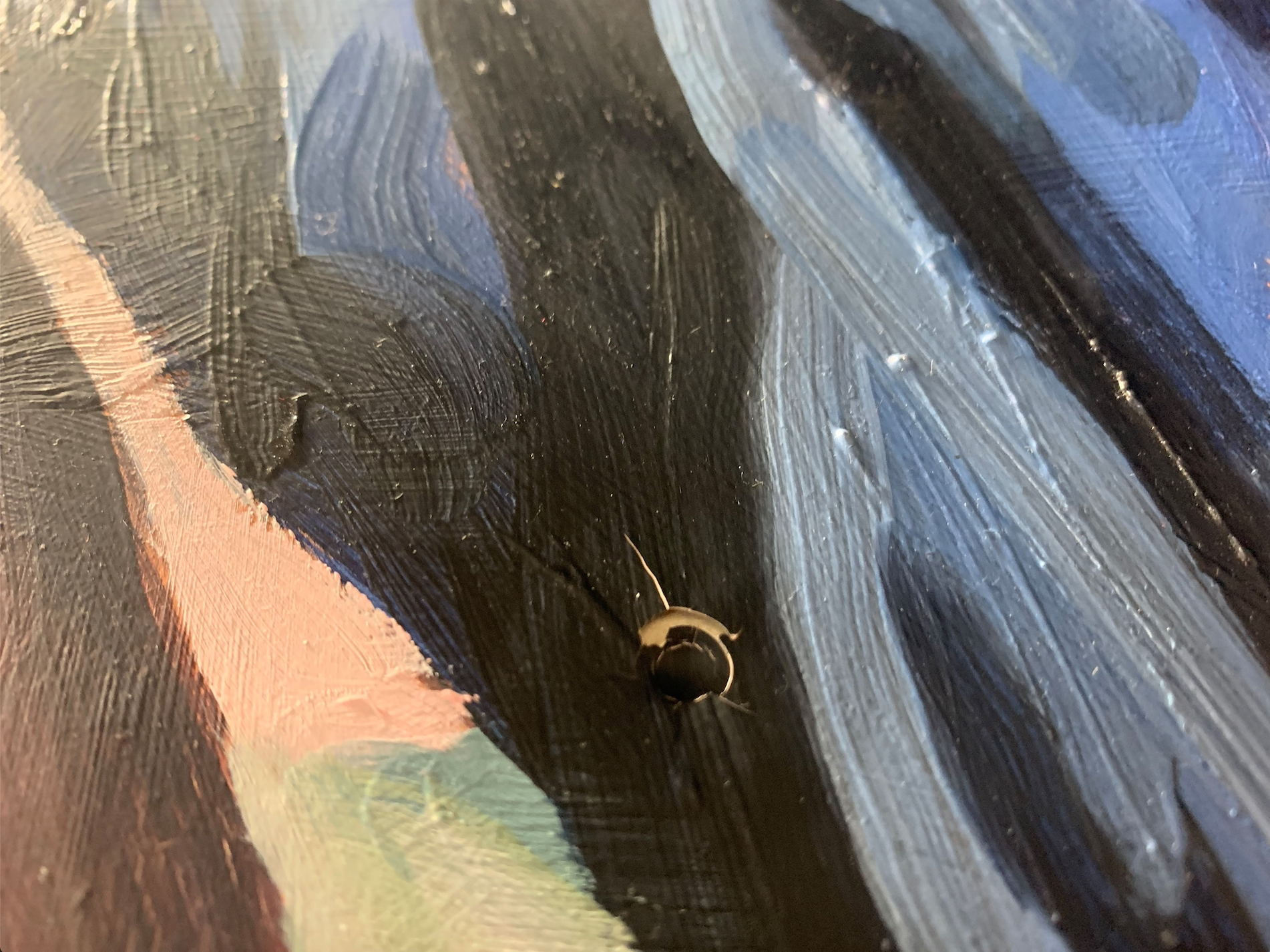Mysterious bullet hole through Jesus Christ found on painting of The Last Supper
Photos of the damage were provided to The Independent

A modern painting of The Last Supper has been discovered with a bullet hole through the figure of Jesus Christ.
In pictures shown exclusively by The Independent, the damage is clearly seen on the three-and-a-half metre tall canvas by Lorna May Wadsworth.
The bullet hole was discovered as the painting was being prepared for display at the Graves Gallery in Sheffield. It had previously been on display behind the altar of a Gloucestershire country church for a decade.
The bullet hole was later confirmed by ballistics experts to have come from an air rifle.
Wadsworth refashioned the biblical scene by modelling Jesus Christ on the Jamaican-born model Tafari Hinds.

Commenting on the damage to her painting, the artist said in a statement: “Initially, when I first saw the damage, I was so upset that I considered pulling the painting from the exhibition. However, it was also very important to me that whoever did the damage didn’t ‘win’.”
She added that the position of the bullet hole, on Jesus’s right side, had caused some to speculate whether it was supposed to be representative of the final wound he sustained from a Roman lance while hanging on the cross. When asked whether there could be a possible racist motive behind the damage, Wadsworth commented: “I hope it was just mindless vandalism as the alternative is too horrible to contemplate.”
The East London-based artist began work on the painting in 2008, after being commissioned by a parishioner in Gloucestershire. She had previously described the significance of The Last Supper as one of “love and betrayal”, which are “part of the human experience”.
The Graves Gallery is hosting a retrospective of Wadsworth’s work titled GAZE in her home town of Sheffield. The gallery has confirmed the exhibition will be held regardless, saying in a statement: “We very much look forward to opening the exhibition as planned on Saturday.”
Also on display will be her portrait of David Blunkett, which usually hangs in Portcullis House, as well as those of Tony Blair, David Tennant, and the Archbishop of Canterbury Rowan Williams.
Join our commenting forum
Join thought-provoking conversations, follow other Independent readers and see their replies
Comments
Bookmark popover
Removed from bookmarks